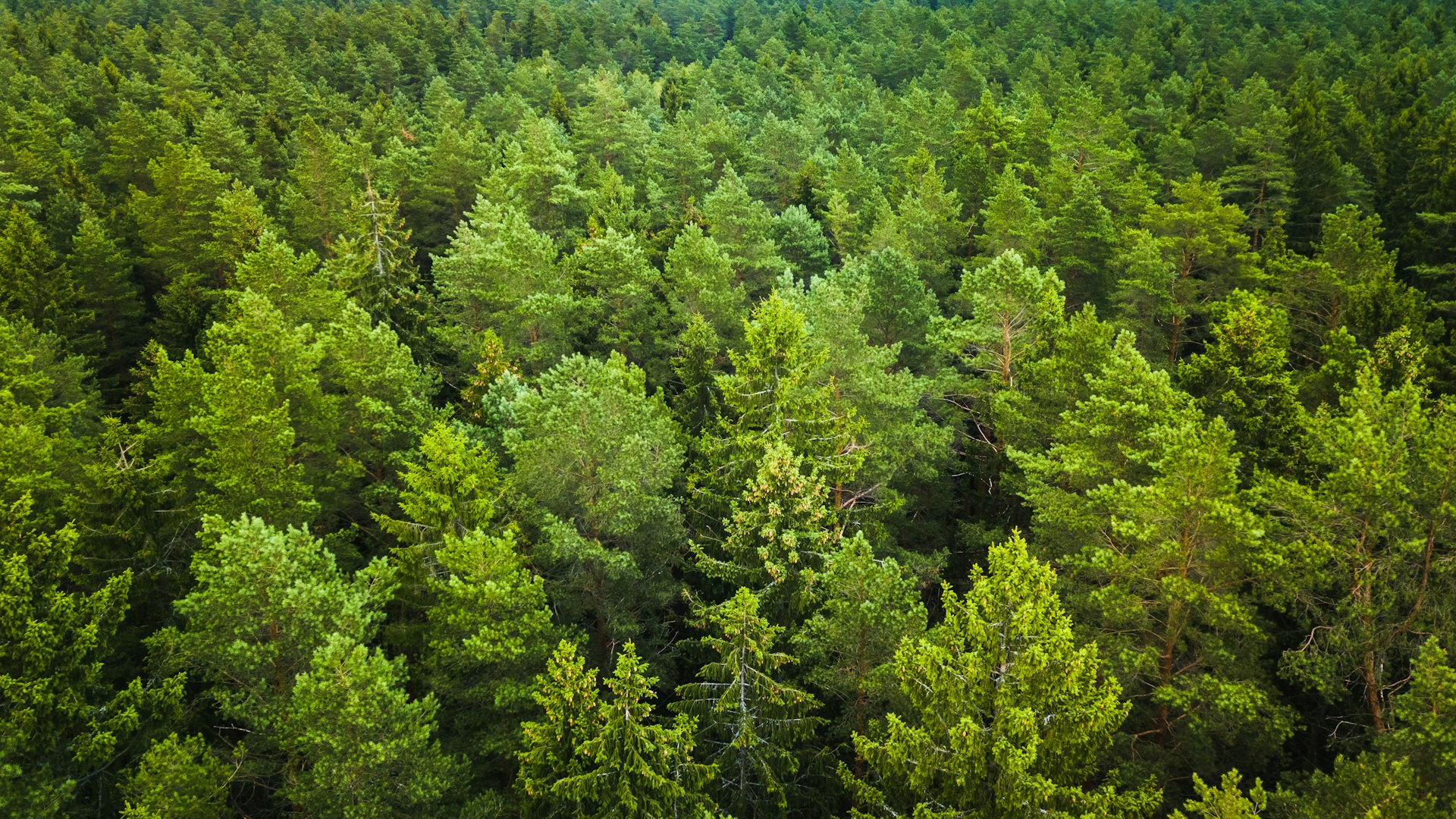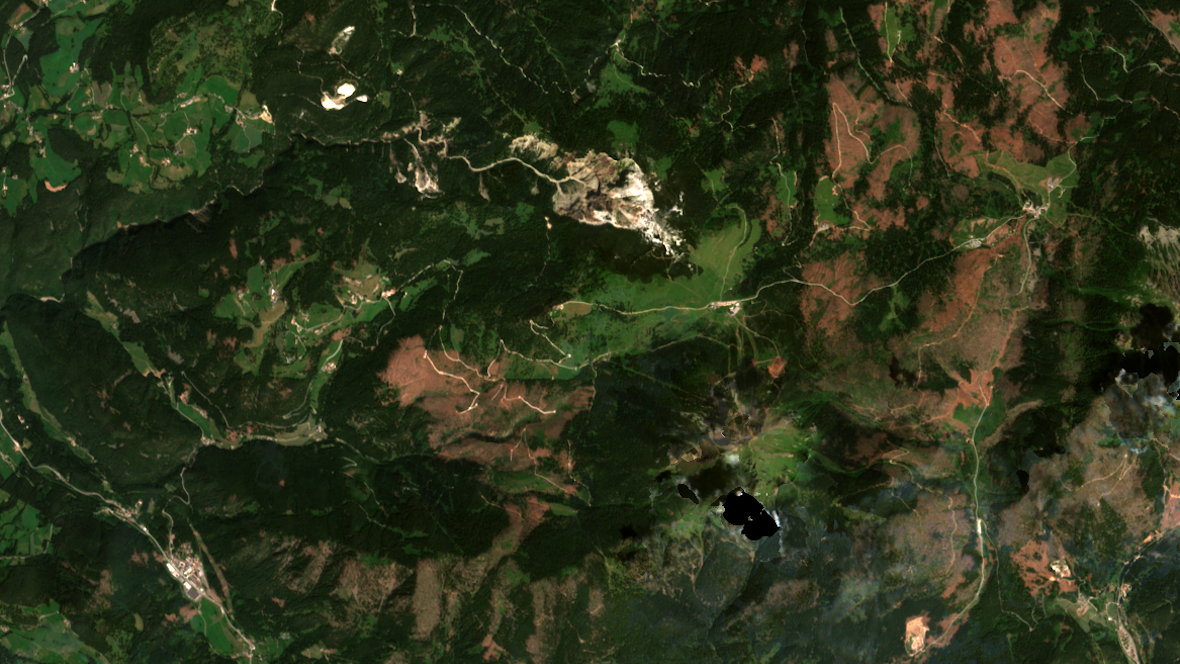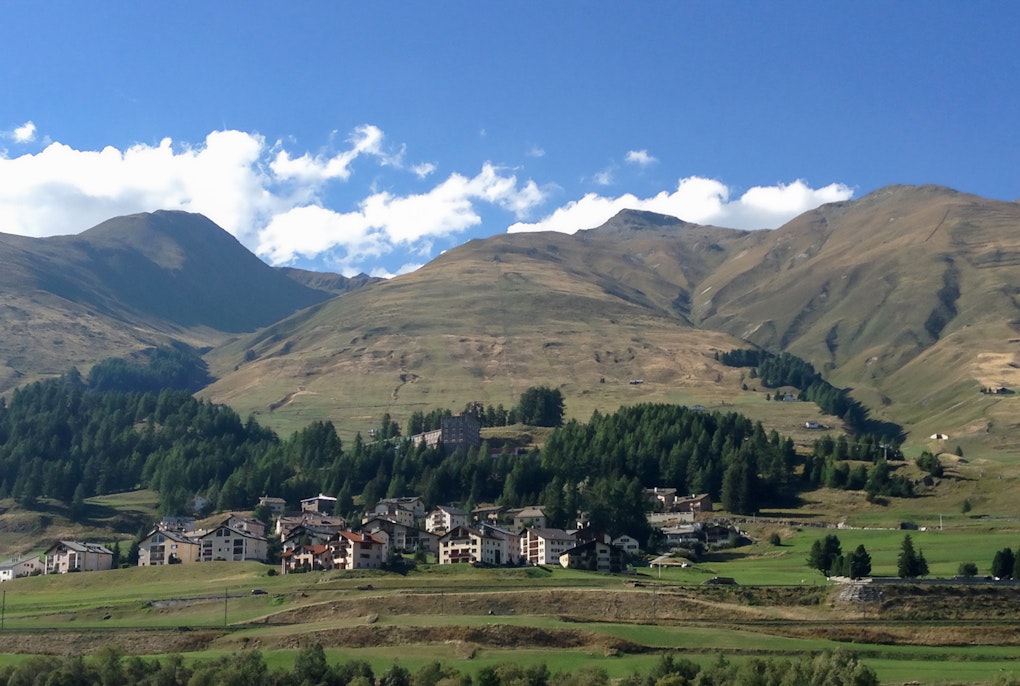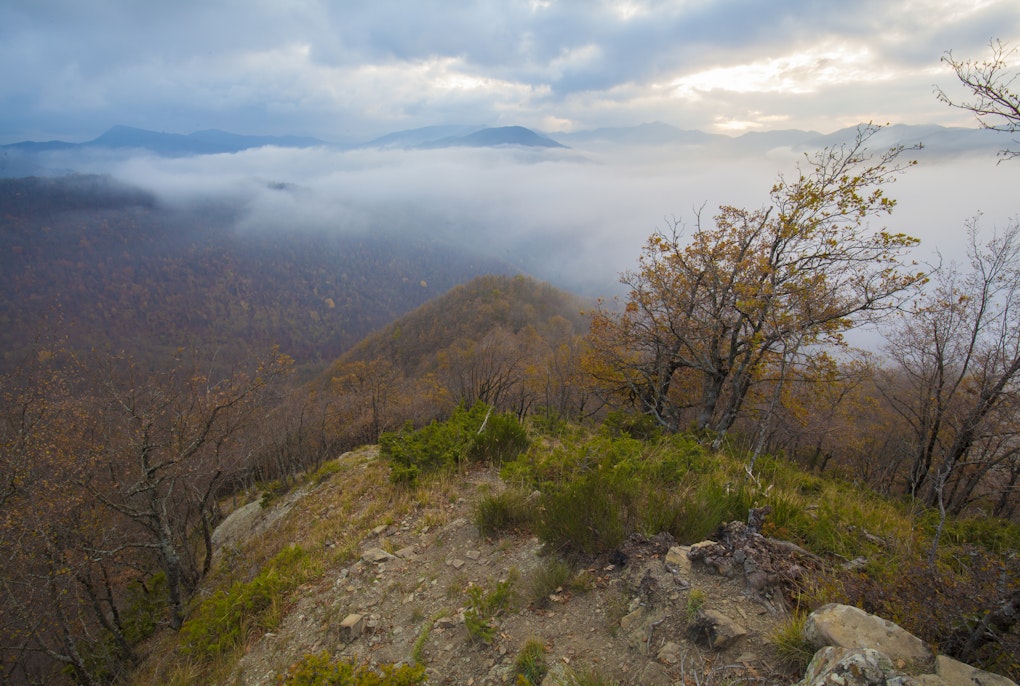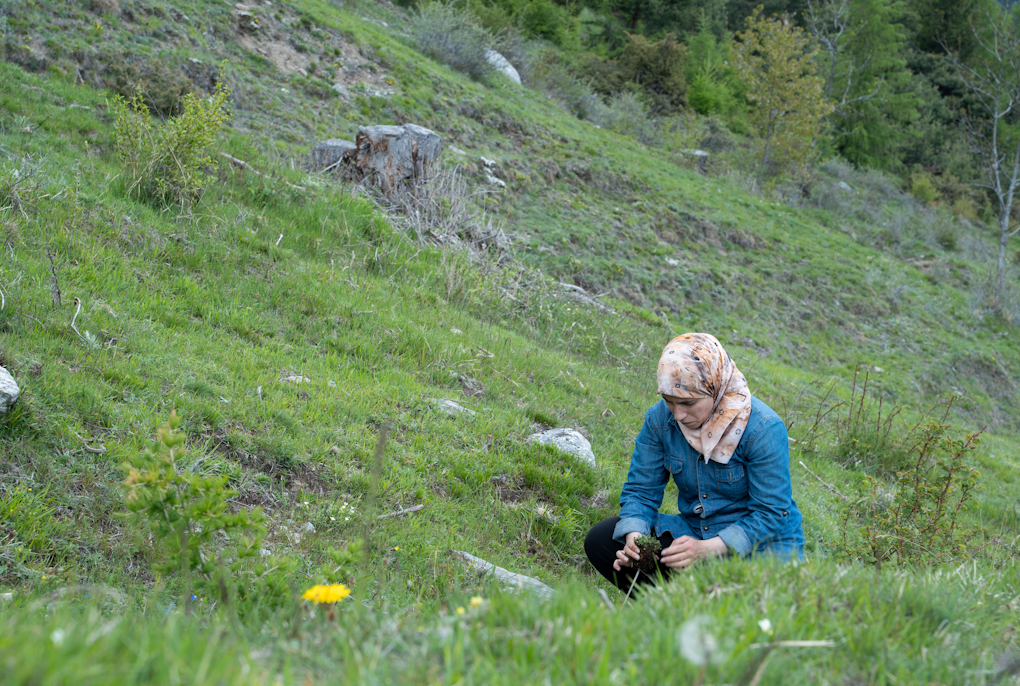magazine_ Feature
The future of forests
Simulations based on mathematical models can help us understand how global environmental changes will affect woodlands
Fragile and yet highly important, forests are ecosystems that are increasingly susceptible to the risks of global environmental changes: pests, droughts and more frequent and intense extreme weather. Mathematical models can now simulate these future scenarios and help us understand how forests will behave in the face of anticipated changes such as rising temperatures and enable governments to be more prepared in their response to unexpected events.
A new research project is currently calibrating forest landscape models and conducting scenario analyses for selected forest areas in the Vinschgau Valley in South Tyrol.
October 28 and 29, 2018. A strong Atlantic disturbance hits the Eastern Alps with rain and winds up to 200 km/h. What will later be called storm Vaia takes down 20,000 hectares of forest and 42 million trees, causing damage still visible today. In the summer of 2021 extreme events related to forests return to the center of the news: large fires affect several Mediterranean countries, leading in Italy alone, to the destruction of 158,000 hectares of forest and the evacuation of thousands of people.
Satellite image, generated with Sentinel-2 data, shows the catastrophic consequences of storm Vaia in July 2019 near Passo Lavazè, one of the areas most devastated situated between the provinces of Trento and Bolzano. Copyright: Sentinel-2 (©ESA/ATG medialab)
But are forests really that fragile? "It is a complex environment, about which we know a lot, but of which there is still much to discover. Certainly, it is an ecosystem that is fragile by nature, but it is also naturally adapted to reacting to disturbances that change its balance," explains Marco Mina, forest ecologist at Eurac Research's Institute for the Alpine Environment. "The problem obviously arises when the effects impact people, for example when an entire community has to evacuate because of fires or when the so-called ecosystem services - that is, the resources that the forest offers, including several economic resources - are lost."
Climate change, economies, and society. What makes forests vulnerable?
Fires, storms, avalanches and pests are some of the main dangers to forests yet climate change tops them all. In North America, for example, insects that were introduced more than a century ago and have remained dormant since, become a problem when higher temperatures allow them to develop and expand into regions previously considered off-limits. In general: climate change leads to extreme events occurring more frequently and more powerfully.
"Sometimes forests are more fragile because of what we’ve done to them."
Vulnerability depends on many factors, including the socio-economic fabric of the area where the forest grows, its level of exploitation and its proximity to humans. A recent study has shown that in the United States the forests most affected by the action of exotic pathogenic insects were those near major ports, such as Boston, because these insects travel with goods. Similarly, fires are more common near urbanized areas, where the likelihood of an initiating factor increases.
"Sometimes forests are more fragile because of what we’ve done to them," says Marco Mina. One example is precisely the forests of the Asiago Plateau, in the Venetian Prealps, that were hit hard by October 2018’s extreme phenomena. "These are a typical example of secondary formations, in the sense that they were replanted after World War I, resulting in a pure spruce forest. This type of forest is definitely more vulnerable in the face of extreme winds, such as the ones that occurred." In fact, pure spruce stands grow faster and their timber products are more easily worked and transported than those from primary forest that has developed through natural processes. Primary forests have a more heterogenous structure and are typically comprised of several species such as spruce, fir, beech, larch. A pure spruce forest undoubtedly has more economic advantages, at least in the immediate term. For the same reason, spruce forests have been planted in many lowland areas in Central Europe, even though it’s not a place properly suited to this species from a climatic perspective. With the drought of 2018, these ecosystems experienced decidedly high mortality among tree species.
Simulate the predictable but be prepared for the unexpected.
The benefits that a forest can provide to humans and the dangers to communities that may result from it are the expression of a very large number of factors that, among other things, include ecological, climatic and social variables. The idea is to create mathematical models that allow us to understand how and to what extent, a forest will be modified when some of these variables change.
"Today's models should not only give us a better understanding of how forests work, row, and evolve as ecosystems. They should also show us what to actively do to prevent risks and where best to intervene, within complex forest landscapes in order to maximize their resilience during extreme events," explains Marco Mina an ecologist who joined the ranks at Eurac Research in mid-2021, thanks to a Marie Sklodowska-Curie fellowship, to calibrate mathematical models that represent the different forest types in South Tyrol enclosed in certain study areas, focusing on the Vinschgau Valley especially. The idea is to also use these models to simulate future scenarios.
Creating an ecological model of the forest ecosystem to an extent, means creating a virtual copy of the forest on which long-term simulations can be made. For example, to understand how the growth rate of certain tree species might change as the average temperature increases and precipitation regimes change, how much the tree line will move to higher altitudes or to assess the future ability of the forest to absorb Co2. Different regimes and forest management interventions can then be simulated to test possible solutions to events, both expected and unanticipated: for example, favoring species with distinct functional traits or genetic varieties resistant to certain factors can make these ecosystems more ready to deal with a given pest or mitigate the effects of climate change. "Obviously we can't imagine everything, but certainly many different scenarios can be explored, including those related to the most extreme events."
“Today's models should not only give us a better understanding of how forests work, but also suggest what to actively do to prevent risk and maximize their resilience during extreme events.”
Mathematical models of this type are tools that can give valuable recommendations "Their reliability resembles that of the weather, obviously at very different time scales," explains Marco Mina, "At 10-20 years they offer fairly precise forecasts. On longer time scales, which reach a century, uncertainty increases. But they still manage to provide useful indications at a general level: just like long-term weather forecasts, they offer general information about trends and how the weather will develop."
Calibrating Forest Landscape Models in South Tyrol
In South Tyrol, the calibration and application of forest simulation models as the first phase, in a jargon very reminiscent of computer science, is called initialization. This initialization will be carried out on a subregional scale in two areas within the Vinschgau Valley: the Mazia Valley - which has already been home to a Eurac Research open-air laboratory of for long-term ecological research (LTSER) for years - and a forest area near Prato allo Stelvio that also includes a portion of the National Park. "These places were chosen because they host different forest types, at different elevations," comments Marco Mina, "the variety of constitution of these forests could allow us to extrapolate useful results for similar forest types found in other areas of South Tyrol. And we have not excluded the possibility of including other areas in the modeling, especially more southern valleys such as Val d'Ega or in Trentino in the future.
At the moment Marco Mina - together with other colleagues from the Eurac Research Institute of Alpine Environment - is working on the most challenging and substantial phase of the project: data collection and initialization of the forest landscape. In order to initialize and calibrate a simulation model at such a large scale, a huge amount of current and historical data is required. The data provided by the Forest Planning Office of the Province of Bolzano is already a source of valuable information on the structure of the forest - volumes, current stages of development, characteristics of the soil where the trees grow, percentage of tree species present - and on the management and logging interventions, in essence they tell how the forest has evolved in recent decades. This information can be integrated with the even more detailed data, collected in the forest by Eurac Research researchers, who can also describe the growth of a single tree in relation to the climate.
"Contact with local governments is invaluable. Not only because they provide data essential to initialize the models, but also because they tell us what the most current issues that we could try to answer with our modeling studies are," comments Marco Mina. "It is encouraging to see how local authorities are interested in the final product and how they will be able to use it. For our part, understanding their needs allows us to calibrate the models even better for very practical applications." The third phase of the project will involve the creation of scenarios that go beyond climate change and describe the socio-economic management of the forest. Models that quantify - including economically - the ecosystem services that the forest provides to communities and the resources needed to manage these areas. "Simulating such scenarios will allow us to understand not only how much it costs to protect the forest, but also how much it costs not to protect it.”
From the Alps to North America, and back again
A forest ecologist and expert in forest dynamics simulation models, Marco Mina works to understand how to better manage our forests in a future characterized by global change. After his first years of forestry research in Switzerland - at the Swiss Federal Institute of Technology in Zurich and the Swiss Federal Institute for Forest, Snow and Landscape Research WSL - he moved to Canada at the University of Quebec in Montréal. There he began to study the resilience of North American forests to climate change, again using advanced mathematical models. It is precisely this methodology that will be applied in his project for the forests of the Alps. Since 2021 Marco has been working at the Institute for the Alpine Environment at Eurac Research.
 technical documentation
technical documentationThe“REINFORCE project: INtegrated landscape management for REsilient mountain FORests under global changes”
The REINFORCE project develops and analyzes possible forest management strategies to increase the resilience of European mountain forest landscapes in the face of imminent global changes. Using advanced modelling and simulation systems, the future dynamics of the forest landscape in different study areas in the Alpine regions will be analyzed. Based on these results, alternative and resilience-based forest management plans will then be evaluated. The innovative approach of REINFORCE is to combine dynamic landscape modeling, functional diversity - i.e. a concept of diversity based on the ecological role of each species instead of only on their abundance - and ecological network analysis. This approach allows us to determine where to most efficiently intervene within the forest landscape to maximize resilience to sudden disturbance and climate change. The project is funded by the European Union's Horizon 2020 research and innovation program under the Marie Skłodowska-Curie grant agreement no. 891671 awarded to Marco Mina (MSCA-IF-2019) and coordinated by Eurac Research.
